Weather Conditions
Temperature -17 C 1 F
Wind speed 7.0 knots
Wake up 1:30am, 3:43am and 6:30am
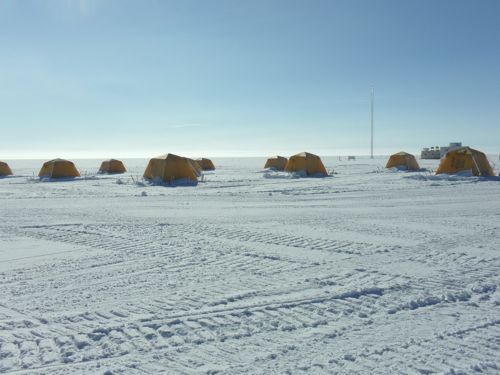
Sleeping in a tent in the Arctic was a new experience for me. Temperatures dipped below 0 degrees F and the winds were consistently blowing against the tent. At first, I was a little cold, but I eventually warmed up enough that I could shed my sleeping bag liner. I was thankful for my special yellow bottle, especially since I did not have to put on all of my gear to make late night visits to the outhouse in negative temperatures.
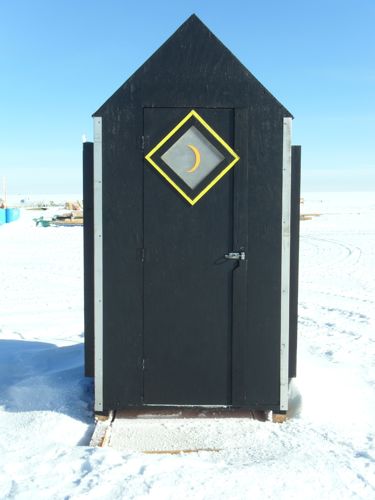
Emerging from the tent, I was pleasantly surprised to see a fog rainbow hovering over the Big House. The snow was crunching under my feet indicating the absence of moisture and very low temperatures. Breakfast was a help yourself buffet of cereals, bagels and fruit. At 8am, Ken gave the daily update to the Summit Station crew. The outlook for today was to get ready for the arrival of the Phase 1 winter crew. They will stay at Summit for three months, maintaining the station and science equipment. The weather outlook is fair with fog in the morning, winds 2 to 15 mph and better weather on the way.
Nico notified me that today might be a good day to go out to the Automated Temperature Profiling Unit (ATPU), a special snow and atmosphere recording station, to retrieve a tripod, scientific recording instrumentation and data logging equipment. We immediately located Ken to acquire the necessary safety equipment for going off site of Summit Station. He issued us a SatelliteAn object placed in orbit around the earth to collect or transmit information. phone, GPSA Global Positioning System (GPS) is a satellite-based navigation system used to track the location or position of objects on the Earth’s surface., survival bag and detailed instructions on how to use all of the above.
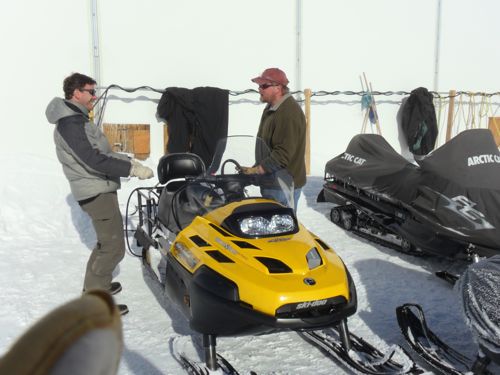
After packing our lunch, we went to the garage to receive instructions on how to operate a snow machine and pick up some shovels. After a four-mile bone-chilling ride, we arrived at the site. It was a beautiful location, in the middle of the Greenland ice sheet. The sky was blue, the terrain was white and there was nothing as far as the eye could see.
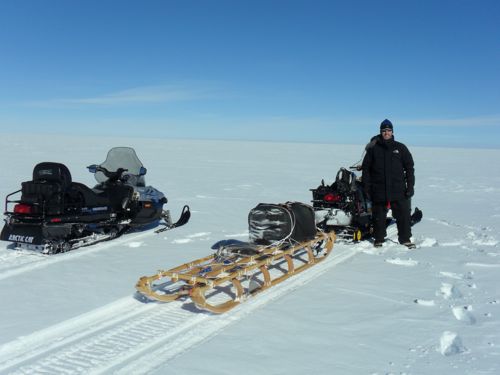
We started digging and digging and digging. After a few hours we removed two of the three tripod legs. What Nico did not tell me was how deep the equipment was!
The equipment was still buried at least a meter deep.
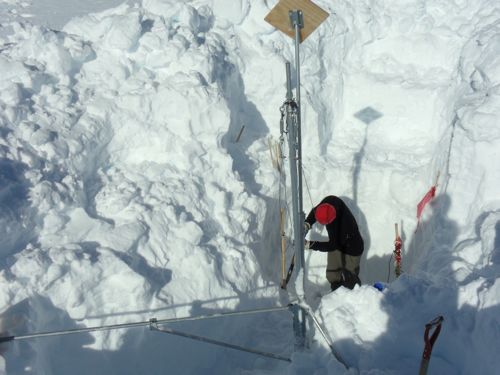
After lunch, we dug hard and finally after six hours of digging we reached the equipment.
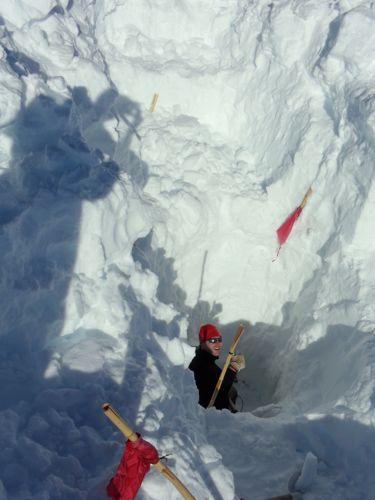
I took us about an hour to free up the frozen box, using snow machines and ropes to pull it free. What a relief it was to first of all, find the box with the equipment, but getting it out of the very dense snow located about 20 feet deep.
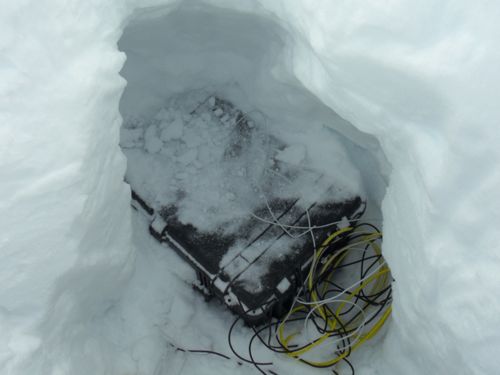
Remember, this equipment was placed here in 2007 and has been recording data since then. The accumulation of snow has been consistent with no snow melting. This is one of the things that make Summit Station so unique the snow never melts! Since it is in the center of the ice sheet, snow only accumulates.
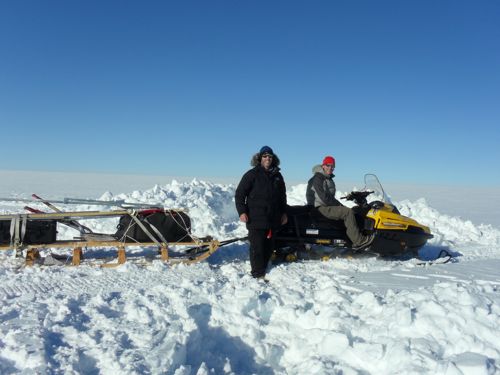
With the task complete and everything ready to go, we headed back to Summit. Once back at Summit, we unloaded all the equipment, returned the snow machines and ate dinner. That was one of the hardest working days I’ve had in a long time. I’m tired and ready for some much needed rest. I fear I will be quite sore tomorrow.
I’ll spend some time soon to discuss the data that was collected by the Automated Temperature Profiling Unit we extracted. Until then, this is Jim Pottinger signing out…ouch.


Comments